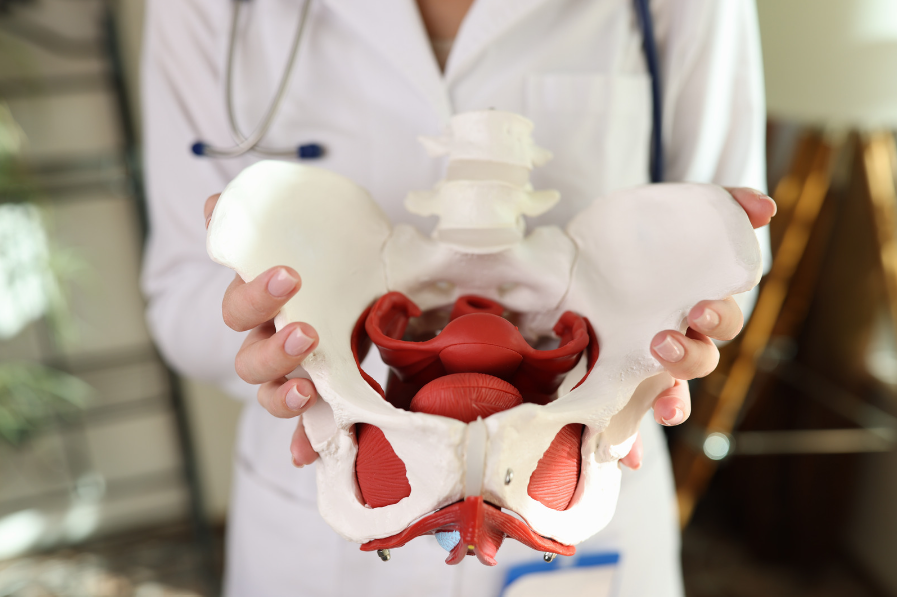Women’s health encompasses a wide range of issues, and one particular concern that affects many women is chronic pelvic pain. This condition can have a significant impact on a woman’s quality of life, often causing physical discomfort, emotional distress, and disruption to daily activities. In this comprehensive guide, we will delve into the topic of chronic pelvic pain, exploring its causes, symptoms, diagnosis, and available treatment options. By gaining a better understanding of this condition, women can be empowered to seek appropriate medical care and find relief from their symptoms.

What is chronic pelvic pain?
Chronic pelvic pain is a persistent pain that occurs in the pelvic region and lasts for at least six months. It can range from mild to severe and may be intermittent or constant. The pelvis is the area between the hip bones, encompassing the reproductive organs (uterus, ovaries, fallopian tubes), bladder, and rectum. However, chronic pelvic pain can also radiate to the lower back, buttocks, and thighs.
Causes of Chronic Pelvic Pain:
Identifying the underlying causes of chronic pelvic pain can be challenging due to its diverse nature. Some common causes include:
- Pelvic inflammatory disease (PID): An infection of the reproductive organs, often caused by sexually transmitted infections (STIs) such as chlamydia or gonorrhea.
- Endometriosis: A condition where the tissue that lines the uterus grows outside of it, leading to inflammation, scarring, and pain.
- Adenomyosis: Similar to endometriosis, this condition involves the tissue that lines the uterus growing into the muscular wall, causing pain and heavy menstrual bleeding.
- Fibroids: Noncancerous growths that develop in the uterus and can cause pelvic pain, heavy periods, and pressure on nearby organs.
- Pelvic congestion syndrome: Enlarged veins in the pelvis, leading to chronic pain, especially during prolonged standing or sitting.
- Irritable bowel syndrome (IBS): A gastrointestinal disorder that can cause abdominal pain, bloating, and changes in bowel habits, often coexisting with chronic pelvic pain.
- Interstitial cystitis: A chronic bladder condition characterized by pelvic pain, urinary frequency, and urgency.
- Musculoskeletal problems: Issues such as pelvic floor muscle dysfunction or myofascial pain syndrome can contribute to chronic pelvic pain.
Symptoms and Impact on Women’s Health:
Chronic pelvic pain manifests differently in each individual, but common symptoms include:
- Dull, aching, or sharp pain in the pelvic area
- Pain during sexual intercourse (dyspareunia)
- Menstrual pain (dysmenorrhea)
- Painful bowel movements or urination
- Fatigue and sleep disturbances
- Mood swings, anxiety, or depression
The impact of chronic pelvic pain on women’s health extends beyond physical discomfort. It can disrupt daily routines, work productivity, relationships, and overall well-being. Women may experience emotional distress, frustration, and a decreased quality of life due to the persistent nature of the pain and the challenges associated with its diagnosis and treatment.
Diagnosis and Treatment:
Diagnosing chronic pelvic pain requires a comprehensive evaluation by a healthcare provider. The process typically involves:
- Medical history review: The healthcare provider will inquire about the nature, location, and duration of the pain, as well as any additional symptoms.
- Physical examination: A thorough examination of the pelvic area, abdomen, and lower back may be conducted to identify any abnormalities, tenderness, or signs of infection.
- Diagnostic tests: Depending on the suspected cause, various tests such as ultrasound, MRI, laparoscopy, or blood tests may be recommended to further investigate potential underlying conditions.
Once a diagnosis is made, the appropriate treatment plan can be established. Treatment options for chronic pelvic pain may include:
- Medications: Pain relievers, hormonal therapies, or antibiotics may be prescribed, depending on the underlying cause.
- Physical therapy: Techniques such as pelvic floor muscle relaxation exercises, biofeedback, or trigger point release can help alleviate pain and improve muscle function.
- Minimally invasive procedures: In certain cases, procedures like laparoscopy or nerve blocks may be recommended to address specific causes of chronic pelvic pain, such as endometriosis or pelvic congestion syndrome.
- Psychological support: Emotional well-being is an essential aspect of managing chronic pain. Therapies such as cognitive-behavioral therapy (CBT) or counseling can help women cope with the emotional impact of chronic pelvic pain.
- Complementary therapies: Some women find relief through practices like acupuncture, yoga, or mindfulness meditation. These approaches can promote relaxation and provide additional support in managing chronic pain.
Conclusion:
Chronic pelvic pain is a complex condition that affects many women worldwide, causing physical discomfort and emotional distress. Understanding the causes, symptoms, diagnosis, and treatment options for chronic pelvic pain is crucial in providing appropriate care and support for women experiencing this condition. By seeking medical attention and exploring available treatment options, women can find relief and improve their overall quality of life.
If you are experiencing chronic pelvic pain, it is important to consult with a healthcare provider who specializes in women’s health. They can help determine the underlying cause of your pain and develop a personalized treatment plan to address your specific needs. Remember, you are not alone in your journey, and there are resources and support available to help you manage chronic pelvic pain and improve your overall well-being. Take charge of your health and seek the necessary care to live a fulfilling life free from the burden of chronic pelvic pain.
Also Read: The Ultimate Diet Guide for Men in Their 40s: Lower Your High Cholesterol Naturally


